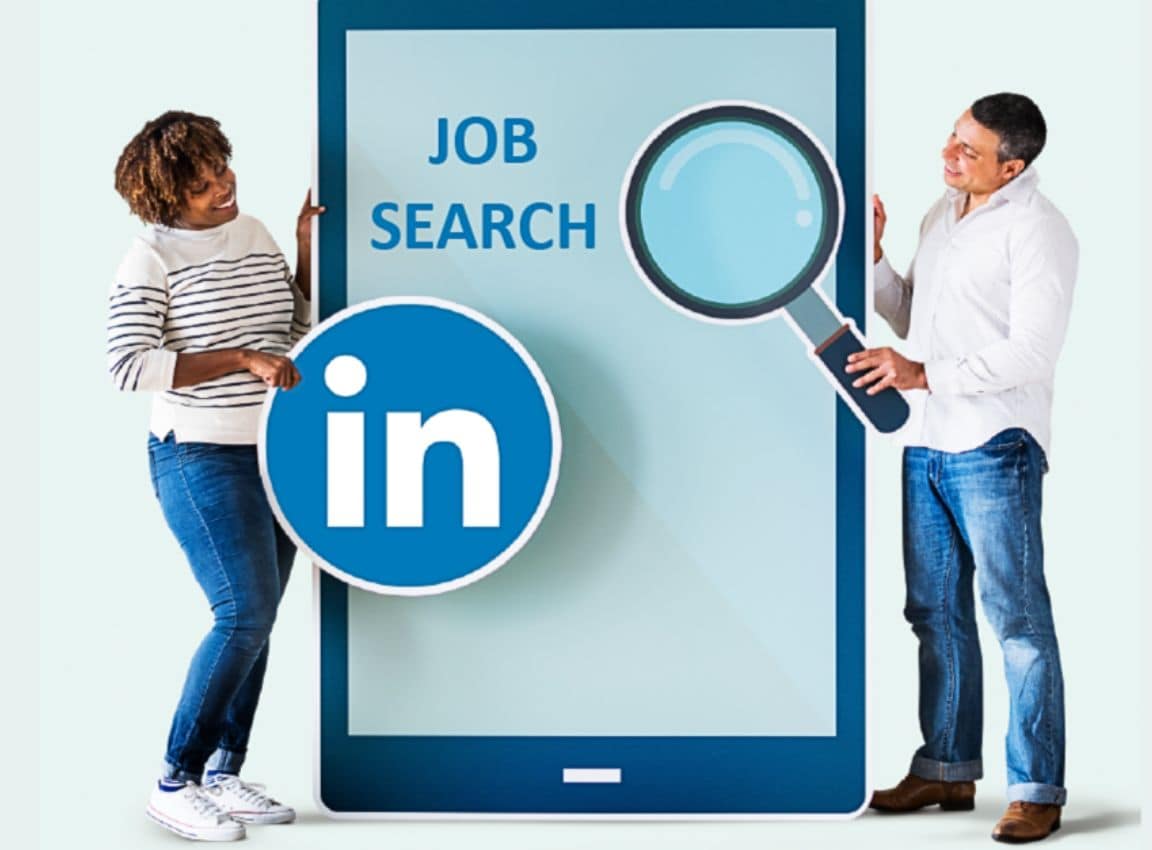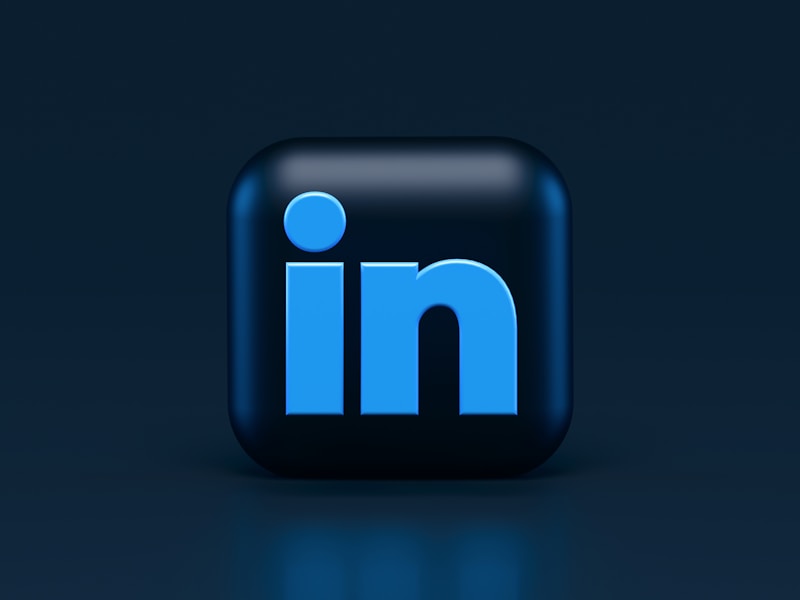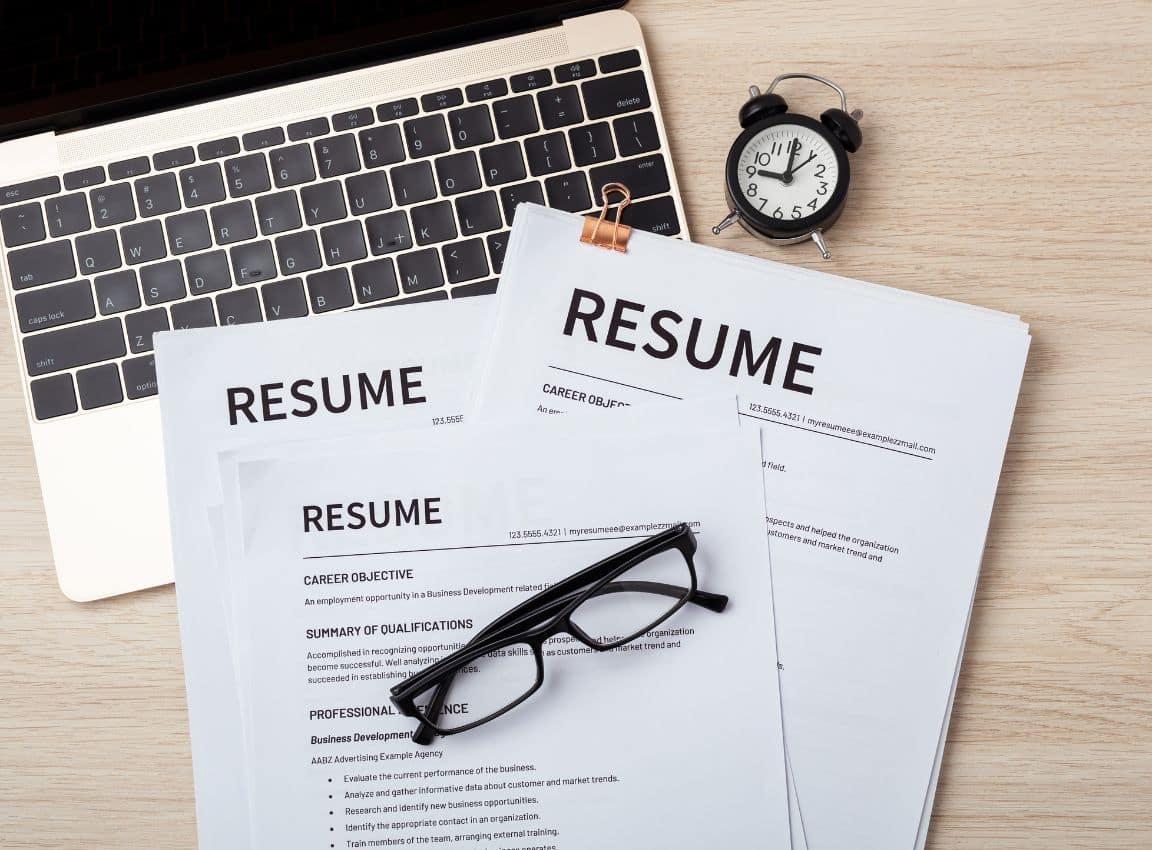LinkedIn has evolved from a simple professional networking site into the most powerful job search platform on the planet, with over 1 billion members across 200 countries. If you’re serious about finding your next career opportunity in 2025, mastering LinkedIn isn’t just recommended – it’s essential. This comprehensive guide will transform you from a passive LinkedIn user into a strategic job seeker who attracts recruiters, builds meaningful connections, and lands interviews at top companies.
Whether you’re a recent graduate entering the workforce, a seasoned professional seeking new challenges, or someone pivoting careers entirely, this guide provides the exact blueprint you need to succeed in today’s competitive job market. We’ll cover everything from optimizing your profile for maximum visibility to leveraging LinkedIn’s hidden features that most job seekers never discover.
1. LinkedIn Profile Optimization: Your Digital First Impression
Your LinkedIn profile serves as your always-on digital resume, working 24/7 to attract opportunities even while you sleep. LinkedIn’s own research reveals that profiles with professional photos receive 21 times more profile views and 36 times more messages than those without. Yet surprisingly, only 40% of users have optimized their profiles for job searching.
The foundation of a powerful LinkedIn presence starts with understanding how recruiters actually use the platform. Most recruiters spend less than 30 seconds reviewing a profile during initial searches, which means every element must immediately communicate your value proposition.
- Professional Headline Formula: Your headline should follow this structure: [Current Role/Aspiration] | [Key Expertise] | [Unique Value Proposition]. For example: “Marketing Manager | B2B SaaS Growth Specialist | Driving 300% ROI Through Data-Driven Campaigns”
- Photo Requirements: Use a high-resolution headshot with natural lighting, professional attire appropriate for your industry, and a genuine smile. Your face should occupy 60% of the frame with a neutral or professional background.
- Banner Selection: Choose a custom banner that reflects your professional brand – this could be your city skyline, industry-relevant imagery, or a subtle pattern in your brand colors.
- Contact Information: Include your professional email, portfolio website, and consider adding your calendar scheduling link to make it easy for recruiters to book time with you.
Crafting Your About Section is where most job seekers fail to differentiate themselves. Instead of listing responsibilities from your resume, tell your professional story in a way that connects with readers emotionally while demonstrating tangible results. Start with a hook that captures attention, then weave in your achievements, passion, and future aspirations.
Your About section should be between 250-400 words, written in first person to create connection, and include 5-7 relevant keywords naturally throughout the text. Break it into digestible paragraphs with clear spacing, and end with a specific call-to-action telling readers exactly what opportunities you’re seeking.
✔ Example About Section Opening
“Three years ago, I helped a struggling startup increase their monthly recurring revenue from $50K to $2M by reimagining their entire customer acquisition strategy. That experience taught me that marketing isn’t just about creativity – it’s about understanding human psychology, analyzing data patterns, and constantly testing new approaches. Today, I specialize in helping B2B SaaS companies build predictable revenue engines through strategic content marketing and conversion optimization.”
2. Strategic Keyword Placement for Maximum Visibility
LinkedIn’s search algorithm functions similarly to Google, prioritizing profiles with relevant keywords in strategic locations. Understanding keyword placement can mean the difference between appearing on page one of recruiter searches versus being buried on page ten where no one will find you.
The algorithm gives different weight to keywords based on their location within your profile. Keywords in your headline carry the most weight, followed by your current job title, About section, and then your experience descriptions. This hierarchical structure means you need to be strategic about where you place your most important keywords.
| Profile Section | Keyword Weight | Optimization Strategy |
|---|---|---|
| Headline | Highest (10x) | Include 3-4 primary keywords/skills |
| Current Job Title | Very High (8x) | Use industry-standard titles with variations |
| About Section | High (5x) | Natural integration of 10-15 keywords |
| Skills Section | Medium (3x) | List all 50 skills with endorsements |
| Experience Descriptions | Medium (3x) | Include keywords in context with results |
| Education & Certifications | Low (1x) | Add relevant coursework and credentials |
Keyword research for your LinkedIn profile should start by analyzing 10-15 job postings for your target role. Copy the job descriptions into a document and identify recurring terms, required skills, and industry-specific language. These patterns reveal exactly what keywords recruiters use when searching for candidates like you.
Remember that LinkedIn’s algorithm also recognizes keyword variations and synonyms. For instance, if you’re in digital marketing, include variations like “digital marketing specialist,” “online marketing,” “digital advertising,” and “marketing analytics” throughout your profile to capture different search queries.
3. Building Your Professional Network Strategically
Your LinkedIn network directly impacts your job search success – not just through who you know, but through who they know. Harvard Business Review research shows that 70% of professionals land jobs through networking, yet most job seekers approach LinkedIn networking randomly without a strategic plan.
The power of LinkedIn networking lies in understanding the concept of second and third-degree connections. When you connect with someone, you gain visibility to their entire network, exponentially expanding your reach. A strategic approach to building connections can put you within one introduction of virtually any hiring manager in your industry.
- 85% of jobs are filled through networking, not public job postings
- 73% of recruiters have hired candidates through LinkedIn
- 61% of job seekers found their current position through networking
- 56% of professionals say LinkedIn provides the highest quality leads
- 42% of recruiters say LinkedIn is their primary sourcing tool
- 38% of job seekers get interviews through employee referrals
Connection Request Best Practices have evolved significantly in 2025. Generic connection requests have a 20% acceptance rate, while personalized messages see 75% acceptance. Your connection request should reference something specific about the person – a recent post they shared, a mutual connection, or a genuine interest in their work.
When crafting connection requests, follow the PVC formula: Personalization (mention something specific about them), Value (what you bring to the connection), and Context (why you’re reaching out now). Keep messages under 300 characters to ensure they’re fully visible on mobile devices where most LinkedIn users check their notifications.
Strategic networking targets should include current employees at your target companies, alumni from your school working in your field, members of professional associations you belong to, speakers from industry events you’ve attended, and authors of articles you’ve found valuable. Each connection category requires a slightly different approach to maximize acceptance rates.
The timing of your connection requests also matters. Tuesday through Thursday between 9-10 AM and 3-4 PM see the highest acceptance rates, as professionals are actively checking LinkedIn during work hours. Avoid Mondays when inboxes are overwhelmed and Fridays when people are wrapping up their week.
4. Mastering LinkedIn Job Applications and Easy Apply
LinkedIn processes over 50 million job applications weekly, with the Easy Apply feature accounting for 60% of all applications. While Easy Apply offers convenience, understanding how to use it strategically can significantly improve your response rate from employers.
The Easy Apply feature seems deceptively simple – just click and submit. However, this simplicity leads many job seekers to spray applications across hundreds of positions without customization, resulting in disappointingly low response rates. Smart job seekers understand that Easy Apply is a tool, not a strategy.
- Pre-Application Checklist: Before clicking Easy Apply, ensure your profile aligns with at least 70% of the job requirements. Recruiters can see when you applied and will immediately check your profile – misalignment wastes everyone’s time.
- Custom Responses Matter: When Easy Apply presents optional questions, always complete them thoughtfully. These responses are often the first thing recruiters review and can differentiate you from hundreds of other applicants.
- Follow-Up Strategy: After applying, find the hiring manager or recruiter on LinkedIn and send a brief, professional message within 24-48 hours expressing your interest and highlighting one key qualification.
- Application Tracking: Create a spreadsheet tracking every application, including company name, position, date applied, and any responses. This prevents duplicate applications and helps you follow up strategically.
Beyond Easy Apply, LinkedIn offers several application methods that many job seekers overlook. Direct applications through company websites linked from LinkedIn job posts often receive priority treatment. Premium subscribers can also use InMail to reach recruiters directly, bypassing the traditional application process entirely.
The hidden advantage of LinkedIn applications lies in the algorithm’s preference signals. When you apply to jobs at specific companies, LinkedIn’s algorithm learns your preferences and surfaces similar opportunities. Consistently applying to relevant positions trains the algorithm to show you increasingly targeted job recommendations.
| Application Method | Response Rate | Best For |
|---|---|---|
| Easy Apply (Generic) | 2-3% | High-volume applications to similar roles |
| Easy Apply (Customized) | 8-12% | Targeted positions at preferred companies |
| Direct Website Application | 15-20% | Dream companies and perfect-fit roles |
| Employee Referral | 30-50% | Companies where you have connections |
| Direct InMail to Hiring Manager | 25-35% | Senior positions and niche roles |
5. Creating Content That Attracts Recruiters
Publishing content on LinkedIn transforms you from a passive job seeker into an active thought leader, increasing your profile views by up to 500%. LinkedIn’s algorithm favors original content creators, giving their profiles higher visibility in search results and news feeds.
The key to successful LinkedIn content isn’t about going viral – it’s about consistently demonstrating expertise in your field. Recruiters increasingly search for candidates who can articulate industry insights, showing not just what you’ve done but how you think about challenges in your field.
✔ High-Performing Content Formula
“Start with a bold statement or surprising statistic that stops the scroll. Share a personal story or professional challenge you overcame. Break down your solution into 3-5 actionable insights readers can implement immediately. End with a thought-provoking question that encourages engagement. Posts following this formula generate 3x more engagement than traditional updates.”
Content themes that resonate with recruiters include industry trend analyses, lessons learned from projects, book reviews relevant to your field, commentary on industry news, and behind-the-scenes insights from your work. Each piece of content serves as a portfolio sample, demonstrating your expertise without explicitly stating it.
Timing and consistency matter more than perfection. Publishing twice weekly at consistent times builds audience expectation and algorithm favorability. Tuesday and Thursday mornings between 7-9 AM typically see highest engagement, as professionals check LinkedIn before diving into their workday.
Engagement strategies extend beyond just publishing content. Commenting thoughtfully on posts from industry leaders puts you on their radar and exposes you to their followers. Many job opportunities arise from relationships built through consistent, valuable engagement in LinkedIn discussions.
6. LinkedIn Premium and Job Seeker Tools
LinkedIn Premium costs between $29.99 and $59.99 monthly, leading many job seekers to question its value. The truth is that Premium features can accelerate your job search, but only if you understand how to leverage them strategically. Studies show Premium members are 3x more likely to get hired, but this statistic reflects correlation, not causation.
The most valuable Premium feature for job seekers is “Who’s Viewed Your Profile,” providing intelligence about which companies and recruiters are interested in candidates with your background. This information allows you to target your applications strategically and reach out to people already interested in your profile.
- ✓ See who viewed your profile in the last 90 days (vs. 5 for free users)
- ✓ Send 5-15 InMail messages monthly to recruiters and hiring managers
- ✓ Access LinkedIn Learning courses to build new skills
- ✓ Get insights on how you compare to other applicants
- ✓ See salary insights before applying to positions
- ✓ Appear as a “Featured Applicant” to recruiters
InMail strategy can make or break your Premium investment. Generic InMails have a 10% response rate, while personalized messages see 40% responses. The key is treating InMail like a scarce resource – research thoroughly before sending, personalize completely, and always provide value in your initial message.
Premium’s salary insights feature provides negotiation leverage by showing salary ranges for specific positions at particular companies. This data, crowdsourced from LinkedIn members, gives you confidence during salary discussions and helps avoid wasting time on positions below your requirements.
The Featured Applicant badge appears next to your application when you apply to jobs, signaling to recruiters that you’re seriously job searching. While this doesn’t guarantee interviews, recruiters report reviewing Featured Applicants first when sorting through hundreds of applications.
LinkedIn Learning, included with Premium, offers over 16,000 courses. Completing relevant courses adds certificates to your profile, demonstrating continuous learning. Focus on courses directly related to skills mentioned in your target job descriptions for maximum impact.
7. Recruiter Outreach and Response Strategies
Every day, 40,000 recruiters search LinkedIn for candidates, sending millions of InMails weekly. Understanding how recruiters work and what they look for transforms you from one of many candidates into their preferred choice. The recruiter relationship often determines whether you get submitted for positions and how strongly you’re advocated for during the hiring process.
Recruiters use Boolean search strings to find candidates, combining keywords with AND, OR, and NOT operators. Understanding this helps you optimize your profile to appear in more searches. For example, a recruiter searching for “Marketing Manager AND (B2B OR SaaS) AND (HubSpot OR Salesforce)” will only find profiles containing these exact term combinations.
- Response Time Matters: Respond to recruiter messages within 24 hours. First respondents are 4x more likely to get interviews as recruiters often work with quotas and deadlines.
- Professional Communication: Keep initial responses brief but enthusiastic. Express interest, confirm your availability for a call, and provide 2-3 time slots that work for you.
- Information Gathering: Ask about salary range, company culture, and growth opportunities early. This saves time and ensures alignment before investing in lengthy interview processes.
- Relationship Building: Even if the current opportunity isn’t perfect, maintain the relationship. Recruiters change firms and remember helpful candidates for future opportunities.
Managing multiple recruiter conversations requires organization and professionalism. Create a tracking system noting each recruiter’s name, firm, positions discussed, and last contact date. This prevents confusion when juggling multiple opportunities and ensures you’re following up appropriately.
Understanding recruiter incentives improves your interactions. Agency recruiters earn commission on placements, motivating them to negotiate higher salaries for you. Internal recruiters focus on cultural fit and long-term retention. Tailor your approach accordingly – emphasize compensation with agency recruiters and culture fit with internal recruiters.
Red flags in recruiter outreach include requests for personal information before discussing opportunities, pressure to accept offers quickly, unwillingness to share company names, and promises that seem too good to be true. Legitimate recruiters are transparent about opportunities and respect your decision-making process.
| Recruiter Type | Response Priority | Key Focus Areas |
|---|---|---|
| Internal Corporate Recruiter | Highest | Culture fit, long-term potential, specific role requirements |
| Executive Search Firm | High | Leadership experience, strategic thinking, industry expertise |
| Staffing Agency | Medium | Immediate availability, technical skills, contract flexibility |
| Contract Recruiter | Medium | Specific project experience, quick start capability |
| Offshore Recruiter | Low | Basic qualifications, willingness to relocate |
8. Advanced LinkedIn Features Most Job Seekers Miss
LinkedIn continuously releases new features, but most job seekers use less than 20% of available functionality. Mastering advanced features provides competitive advantages that differentiate you from other candidates who rely solely on basic profile optimization and job applications.
The Creator Mode feature, originally designed for influencers, offers powerful benefits for job seekers. Activating Creator Mode changes your profile’s default action button from “Connect” to “Follow,” moves your Featured and Activity sections higher, and gives you access to LinkedIn Live and Newsletters. This positioning signals thought leadership to recruiters.
- 76% of hiring managers review candidates’ LinkedIn activity before interviews
- 64% of recruiters check Featured sections for portfolio samples
- 58% of employers value LinkedIn skill assessments
- 47% of job seekers don’t know about LinkedIn’s Open To Work features
- 41% of successful candidates use LinkedIn Events for networking
- 35% of job offers come through LinkedIn’s “People You May Know” suggestions
LinkedIn Skill Assessments provide third-party validation of your abilities. Passing assessments (scoring in the top 30%) adds verified skill badges to your profile. Focus on assessments directly related to your target roles – these badges appear in recruiter searches and demonstrate competency beyond self-reported skills.
The Featured section acts as your portfolio, allowing you to showcase articles, websites, presentations, and media. Unlike attachments buried in experience descriptions, Featured content appears prominently below your About section. Include 3-5 pieces that demonstrate your best work and update them quarterly to show continuous growth.
LinkedIn Events and Audio Rooms offer networking opportunities beyond traditional connection requests. Attending industry events and participating in discussions puts you in front of decision-makers in a more natural context. Many job seekers report finding opportunities through casual conversations in LinkedIn Audio events.
The LinkedIn QR code feature enables instant connections at in-person events. Located in the LinkedIn mobile app’s search bar, your unique QR code eliminates the awkward “how do you spell your last name?” exchange and ensures connections happen immediately while the interaction is fresh.
Custom URL optimization seems minor but impacts your professional brand. Change your default LinkedIn URL from random numbers to linkedin.com/in/yourname. This clean URL looks professional on resumes, email signatures, and business cards while making you easier to find.
LinkedIn’s algorithm also factors in “dwell time” – how long people spend viewing your profile. Profiles with rich media, comprehensive descriptions, and engaging content keep visitors longer, signaling quality to the algorithm and improving your search rankings.
Voice pronunciation features help recruiters correctly pronounce your name, showing attention to detail and cultural awareness. This small addition demonstrates professionalism and helps you stand out in recruiter memory when they’re discussing candidates with hiring managers.
The Services section, available for all users, allows you to list specific services you provide. While designed for freelancers, job seekers can use this to highlight specific skills like “Marketing Strategy Consultation” or “Data Analysis Projects,” making you discoverable for both full-time and contract opportunities.
- LinkedIn Polls: Create polls to demonstrate thought leadership and generate engagement. Polls receive 2x more engagement than standard posts and position you as someone seeking industry insights.
- Newsletter Subscriptions: Follow company and industry newsletters to stay informed. Engaging with newsletter content puts you on the radar of company employees and industry leaders.
- Saved Searches: Set up job alerts with specific criteria and save searches for regular review. The algorithm learns from your saved searches to improve job recommendations.
- Profile Views Settings: Adjust your visibility settings strategically. Going fully visible when job searching increases recruiter outreach while private mode lets you research companies without alerting them.
The Career Advice Hub connects job seekers with mentors in their field. While underutilized, this feature provides access to industry professionals willing to share insights. Many mentors become advocates, referring mentees to opportunities in their networks.
LinkedIn Stories and short-form video might seem casual, but they humanize your professional brand. Sharing behind-the-scenes content from your work or industry events makes you memorable. Recruiters increasingly value personality fit, and video content provides insights text profiles cannot convey.
Understanding LinkedIn’s Social Selling Index (SSI), while designed for sales professionals, benefits job seekers. Your SSI score (accessible at linkedin.com/sales/ssi) measures your effectiveness at establishing professional brand, finding the right people, engaging with insights, and building relationships – all critical for job searching.
The Alumni Tool, hidden in your school’s LinkedIn page, reveals where alumni work and what they do. This powerful networking resource helps identify potential referrals at target companies and provides conversation starters for outreach messages.
LinkedIn Learning paths offer structured skill development beyond individual courses. Completing learning paths demonstrates commitment to professional development and adds multiple certificates to your profile. Focus on paths aligned with emerging skills in your industry for maximum impact.
Finally, LinkedIn’s translation features enable global job searching. Profiles can be created in multiple languages, and automatic translation helps you engage with international opportunities. In an increasingly remote world, this expands your job search beyond geographical boundaries.
Summary
Mastering LinkedIn for your job search in 2025 requires more than just having a profile – it demands strategic optimization, consistent engagement, and leveraging advanced features most job seekers overlook. From crafting a compelling professional narrative to building meaningful connections and creating content that attracts recruiters, every element of your LinkedIn presence should work together to position you as the ideal candidate.
The key to LinkedIn success lies in treating it as a living platform rather than a static resume. Regular updates, strategic networking, and authentic engagement transform your profile from a passive listing into an active career advancement tool. Whether you’re using free or Premium features, the strategies outlined in this guide provide a comprehensive roadmap to accelerate your job search and land opportunities that align with your career goals.
Remember that LinkedIn is ultimately about human connections facilitated by technology. While optimization and algorithms matter, authentic relationship building and value creation remain the foundation of successful job searching. As career experts consistently emphasize, the most successful job seekers combine strategic profile optimization with genuine engagement and continuous learning.
Preguntas Frecuentes
How often should I update my LinkedIn profile when job searching?
Update your LinkedIn profile at least once weekly when actively job searching. This includes adding new skills, updating your headline to reflect what you’re seeking, sharing relevant content, and refreshing your Featured section. Regular updates signal to LinkedIn’s algorithm that you’re active, improving your visibility in searches. Major updates like new certifications or project completions should be added immediately. However, avoid making multiple major changes daily, as this can trigger LinkedIn’s spam detection.
Should I use the “Open to Work” banner on my profile photo?
The “Open to Work” banner increases recruiter visibility by 40% but may signal desperation to some hiring managers. A better approach is using LinkedIn’s private “Open to Work” settings, which notifies recruiters without publicly displaying your job search status. This maintains leverage in negotiations while still benefiting from increased recruiter attention. If you do use the public banner, remove it immediately upon accepting a position to maintain professionalism.
What’s the ideal length for a LinkedIn connection request message?
Keep connection request messages between 125-150 characters for optimal acceptance rates. This ensures your entire message is visible on mobile devices without requiring expansion. Focus on one specific commonality or reason for connecting. For example: “Hi Sarah, I loved your article on B2B marketing trends. As a fellow marketer focusing on SaaS, I’d value connecting to exchange insights.” Shorter messages actually see higher acceptance rates than lengthy introductions because they respect the recipient’s time while still being personal.
How many LinkedIn applications should I submit daily?
Quality trumps quantity in LinkedIn job applications. Aim for 3-5 highly targeted applications daily rather than mass-applying to dozens of positions. Each application should include profile customization for the role, a tailored cover letter when possible, and strategic follow-up with hiring managers. This focused approach yields a 25% response rate compared to 2% for mass applications. Track your applications to avoid redundancy and maintain professional follow-up schedules. Remember that recruiters can see your application history, and excessive applications may signal desperation.
Is it worth paying for LinkedIn Premium during job searching?
LinkedIn Premium becomes worthwhile if you actively use its features strategically. The investment pays off when you send at least 3 InMails weekly, analyze who’s viewing your profile to target applications, use salary insights for negotiation, and complete LinkedIn Learning courses for skill development. If you’re passively looking or only using basic features, the free version suffices. Consider starting with the free one-month Premium trial during your most active job search period. Cancel if you’re not seeing increased recruiter engagement within 30 days.
How do I handle LinkedIn connections from competitors or people I don’t know?
Accept connections from competitors and unknown professionals selectively based on potential value. Competitors often become future colleagues or referral sources as people change companies. For unknown connections, review their profile for mutual benefits – they might be recruiters, potential mentors, or work at target companies. However, avoid connections from obvious spam accounts, people with incomplete profiles, or those immediately pitching services. You can always remove connections later if they become problematic. Remember that larger networks increase your visibility in search results.
What’s the best time to post content on LinkedIn for maximum visibility?
Post on LinkedIn Tuesday through Thursday between 8-10 AM and 5-6 PM in your target audience’s time zone for highest engagement. These windows catch professionals during morning routine checks and end-of-day browsing. Avoid Monday mornings when people are catching up on work and Friday afternoons when engagement drops significantly. However, consistency matters more than perfect timing – posting regularly at any consistent time builds audience expectation. Use LinkedIn Analytics to identify when your specific network is most active and adjust accordingly.
Should I connect with recruiters from competing companies in my industry?
Absolutely connect with recruiters from competing companies, as they offer valuable market intelligence and future opportunities. These recruiters understand your skill set’s value and often move between companies, potentially bringing you opportunities later. They also provide insights about industry trends, salary benchmarks, and skill demands. Just be professional about current employer information and avoid sharing confidential details. Building relationships with multiple recruiters creates options and leverage in your career, even when you’re not actively searching.
How do I explain employment gaps on my LinkedIn profile?
Address employment gaps transparently but strategically on LinkedIn. For gaps under six months, you can often avoid explanation by listing only years, not months. For longer gaps, create an entry explaining productive activities during that period: “Career Development & Professional Training,” “Consulting & Freelance Projects,” or “Professional Development & Family Priorities.” Include any relevant activities like volunteering, courses completed, or freelance work. Never leave unexplained gaps as they raise questions. Focus on skills gained or maintained during the gap rather than dwelling on reasons for the break.
What skills should I list to improve my LinkedIn search visibility?
List all 50 allowed skills on LinkedIn, prioritizing hard skills and industry-specific keywords that appear in your target job descriptions. Include a mix of technical skills (software, tools, methodologies), soft skills (leadership, communication), and industry terms (B2B, SaaS, agile). Place your most important skills at the top as these carry more algorithm weight. Request endorsements for your top 10 skills from colleagues who can credibly validate them. Update skills quarterly to reflect industry trends and remove outdated technologies. Remember that recruiters filter by skills, so comprehensive coverage improves discoverability.
How do I get LinkedIn recommendations without seeming desperate?
Request LinkedIn recommendations strategically by first offering to write one for the person you’re asking. This reciprocal approach feels natural and increases success rates to over 80%. Time requests after project completions or positive performance reviews when your value is top-of-mind. Provide bullet points highlighting specific achievements you’d like mentioned to make it easier for recommenders. Target 3-5 quality recommendations rather than dozens of generic ones. Focus on recent supervisors, clients, and colleagues who can speak to relevant skills for your target roles.






